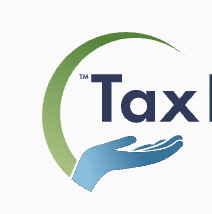
Business tax debt triggers more aggressive IRS collection than personal tax debt. This includes trust fund recovery penalties that make owners personally liable, even if the business files bankruptcy.
The IRS treats payroll tax debt as one of its highest enforcement priorities, since these funds are taken directly from employees’ paychecks and are legally required to be remitted.
This guide breaks down relief options specifically for business tax debt, including how to handle trust fund recovery penalties and when start researching and comparing our best tax relief companies that specialize in business tax issues.
Key Insights
- Trust fund recovery penalty makes owners personally liable for unpaid payroll taxes.
- IRS collection on business debt is faster and more aggressive than personal tax debt.
- Relief programs exist but have stricter requirements and ongoing compliance obligations.
- Prevention through timely deposits is critical to avoid personal liability.
What Are Trust Fund Recovery Penalties and Payroll Tax Liabilities?
The IRS treats trust fund and non-trust fund payroll taxes very differently when collecting business tax debt. Understanding this difference is critical because trust fund violations can result in personal liability and even criminal charges.
Payroll Tax Obligations
Business owners must withhold and remit several types of federal payroll taxes. These fall into two categories with very different consequences:
| Tax Type | What It Includes | IRS Priority |
|---|---|---|
| Trust Fund Portion | Employee federal income tax withholding + Employee Social Security (6.2%) + Employee Medicare (1.45%) | High priority - viewed as theft from employees |
| Non-Trust Fund Portion | Employer's matching Social Security and Medicare + Federal Unemployment Tax (FUTA) | Standard business tax debt |
Why Trust Fund Taxes Matter More for Business Owners
The IRS prioritizes trust fund taxes because they're withheld from employee paychecks—the business holds them in trust for the government. When a business fails to remit these funds, the IRS views it as theft from employees rather than simply unpaid business taxes.
Trust Fund Recovery Penalty (TFRP)
The Trust Fund Recovery Penalty (IRC Section 6672) makes responsible persons personally liable for 100% of the trust fund portion of unpaid payroll taxes. This isn't a percentage penalty—it's full personal liability for the entire amount.
Who Can Be Held Liable for TFRP?
- Business owners and officers: Primary targets for TFRP assessment.
- Anyone with check-signing authority: Can write checks and decide which bills to pay.
- Individuals who decide which creditors to pay: Control payment priorities.
- Bookkeepers or accountants: Those who control business finances.
How TFRP Works
- 100% personal liability: The penalty equals the full amount of unpaid trust fund taxes, not a percentage.
- Applies to individuals: Personal liability that follows you, not just the business.
- Survives bankruptcy: Cannot be discharged in personal or business bankruptcy.
- Survives business closure: Remains collectible even after business closes.
- IRS can seize personal assets: Homes, bank accounts, wages, and other personal property.
Statute of limitations: The IRS generally has three years from April 15th of the year after the quarterly Form 941 was filed or due to assess TFRP against a responsible person.
How TFRP Is Calculated and Applied
Example calculation:
A business owes $50,000 in payroll taxes ($35,000 trust fund portion, $15,000 employer portion). The IRS can assess $35,000 TFRP against the owner personally while also pursuing the business for the full $50,000.
Real case: According to the Taxpayer Advocate Service, a former corporate officer resigned but was still assessed TFRP for the corporation's unpaid trust fund taxes after both companies failed to pay. TAS advocacy helped abate the corporate TFRP and prevent the proposed assessment, saving the officer several million dollars.
Relief Options for Business Tax Debt
Business owners have access to IRS relief programs, but with stricter requirements and additional scrutiny of business financials compared to personal tax debt.
Option 1: Installment Agreements for Business Tax Debt
Business installment agreements allow you to pay tax debt over time through monthly payments, but the terms are significantly shorter and more restrictive than personal agreements.
| Agreement Type | Business | Personal (Individual) |
|---|---|---|
| Streamlined agreements | Under $25,000 debt | Under $50,000 debt |
| Maximum repayment period | 24 months | 72 months |
| Financial documentation | Extensive business financials required | Simpler documentation |
| Ongoing compliance | Must stay current on all payroll deposits | Must stay current on estimated payments |
According to the Taxpayer Advocate Service report, the IRS implements over 2.8 million installment agreements per year, with about 70% being streamlined agreements that require less financial scrutiny.
- Critical requirement: You must stay current on all ongoing payroll tax deposits during the agreement. Missing even one deposit can result in immediate default and IRS levy action.
- For debts over $25,000: Regular installment agreements require extensive documentation including Form 433-B, business profit/loss statements, balance sheets, and cash flow analysis. The IRS may require quarterly financial statement updates.
- Common challenge: Small business taxpayers often struggle to get installment agreements because they need to remain current on new employment tax deposits while also paying back previous liabilities. Many small businesses are unprepared to provide the detailed financial information required.
Option 2: Currently Not Collectible (CNC) Status
Businesses facing genuine financial hardship may qualify for Currently Not Collectible (CNC) status, which temporarily suspends IRS collection activities. This status works best for temporary cash flow crises, seasonal businesses recovering from major client loss, or businesses with turnaround plans after disasters or economic downturns.
How to Qualify for CNC Status
- Demonstrate hardship: Prove the business cannot pay basic operating expenses.
- Detailed financials: Provide profit/loss statements, balance sheets, and cash flow analysis.
- Business closure risk: Show that paying tax debt would force closure.
- No liquidation assets: Prove no assets are available for sale.
Important Limitations of CNC Status
- IRS still files liens: Tax liens remain on business property.
- Ongoing financial updates: Must periodically provide updated financials.
- Collection continues: The 10-year collection statute keeps running.
- Current deposits required: Must remain current on all new tax deposits.
Option 3: Offer in Compromise for Business Taxes
An Offer in Compromise lets you settle business tax debt for less than the full amount, but acceptance rates are lower than personal OIC because the IRS scrutinizes businesses more carefully.
Why Business OIC Is Harder
The IRS evaluates whether your business can stay profitable long-term and calculates what you could reasonably pay. They'll look at business assets, accounts receivable, future profits, and even your personal assets if TFRP was assessed. If your business is making money or has strong income potential, they're less likely to accept a low settlement.
What You Need to Provide for Business OIC
- Three years of business tax returns
- Current profit/loss statements
- Balance sheets with all assets and liabilities
- Accounts receivable aging reports
- Equipment and inventory valuations
- Owner compensation records
Acceptance rates: In fiscal year 2024, the IRS accepted 21.4% of OIC applications (7,199 out of 33,591).
Real example: A small business owner owed $37,202 in payroll tax debt during the pandemic. Victory Tax Lawyers negotiated an Offer in Compromise for just $160—a 99% reduction. The business owner could then focus on rebuilding instead of fighting crushing tax debt.
Option 4: Penalty and Interest Abatement
You may be able to reduce or eliminate penalties (and sometimes interest) if you have a valid reason for late filing or payment.
- Reasonable cause abatement: You can prove circumstances beyond your control caused the problem—like natural disasters affecting operations, serious illness of key personnel, employee embezzlement, relying on a tax professional who made an error, or following incorrect written advice from the IRS.
- First-time penalty abatement: If you have a clean 3-year history with no penalties and you're currently up-to-date on filings and payments, you may qualify. This covers failure-to-file and failure-to-pay penalties but not TFRP.
- Administrative waiver: An IRS mistake or delay caused the penalty. You'll need to show the penalty resulted from the IRS's action, not your business error.
- Success rates of penalty and interest abatement: During fiscal year 2022, the IRS assessed $73.6 billion in civil penalties but abated $50.9 billion—over two-thirds of penalties assessed.
How Business Tax Debt Differs from Personal Tax Debt
The IRS treats business tax debt more aggressively than personal income tax because payroll taxes involve money withheld from employees—making non-payment a breach of trust rather than simple inability to pay.
More Aggressive Collection Timeline
Business tax enforcement moves much faster than personal tax collection:
- Bank levies within 30-60 days: No waiting for multiple notices like personal tax debt.
- Immediate asset seizure: Can seize inventory, equipment, and accounts receivable without court orders.
- Business padlocking: IRS can physically close your business location.
- Revenue Officer assignment: Debts over $25,000 often trigger assignment of a Revenue Officer who makes personal visits, interviews employees and vendors, and analyzes financials on-site.
Critical difference: Automated Collection System (ACS) cases move slowly with multiple notices. Revenue Officer cases move straight to enforced collection—levies, liens, and asset seizures happen fast. If a Revenue Officer is assigned, your timeline just became urgent.
Personal Liability Risk
| Risk Factor | What It Means |
|---|---|
| Trust Fund Recovery Penalty | Makes owners, officers, and responsible persons 100% personally liable; can't be discharged in bankruptcy; applies even after leaving the business |
| Multiple responsible persons | IRS can assess TFRP against multiple people—each liable for 100% (not divided); payment by one person reduces debt for all |
| Spouse liability | Innocent spouse relief generally unavailable for business tax; community property states may make spouse liable; joint bank accounts can be levied |
| Appeal window | Only 60 days to appeal TFRP assessment |
Business Closure Risk
The IRS has authority to shut down your business operations entirely:
- Asset seizure: Can seize business assets, inventory, and accounts receivable to satisfy debt.
- Physical closure: May padlock business premises,
- Bank account freezing: Can levy business bank accounts, halting operations.
- State coordination: States may revoke business licenses, suspend professional licenses, and cancel sales tax permits—making it illegal to operate.
Steps for Business Owners Facing Tax Debt
Taking immediate, organized action when you discover business tax debt can mean the difference between resolution and business closure.
Step 1: Assess the Full Debt
Request business tax account transcripts from the IRS and identify which quarters are unpaid, separate trust fund from non-trust fund portions, check for TFRP assessments against individuals, and review state payroll tax obligations separately.
How to Calculate Total Liability
| Penalty/Interest Type | Rate |
|---|---|
| Failure to deposit penalties | 2-15% depending on lateness |
| Failure to pay penalties | 0.5% per month |
| Compound interest | Currently ~8% annually |
| TFRP amount | If assessed against responsible persons |
Step 2: Ensure Current Compliance
Before the IRS will consider any relief option, all required tax returns must be filed and current deposits must be current.
Required Filings
- Quarterly payroll returns: Form 941 for all unpaid quarters
- Annual unemployment: Form 940
- Business income tax: Form 1120, 1120-S, or 1065
- Personal returns: For all owners and officers
Ongoing compliance: Organize tax planning strategies. Make all current payroll deposits on time, file all current quarter returns, and stop accumulating new debt. The IRS won't negotiate past debt while you're creating new liabilities.
Step 3: Compile Financial Documents
- Last 3 years of business tax returns
- Current year profit/loss statements (monthly)
- Balance sheet showing assets and liabilities
- Bank statements (all business accounts, last 3 months)
- Accounts receivable/payable aging reports
- Business asset list with current values
- Owner/officer compensation records
Personal Financials (If TFRP Assessed)
- Personal tax returns
- Income and expense statements
- Asset listings and valuations
- Personal bank statements
Step 4: Communicate with the IRS
- Act within deadlines: Typically 30 days from notice date.
- Appeal disagreements: Use Form 12153 for TFRP appeals (60-day deadline).
- Don't ignore notices: Silence triggers automatic enforcement.
Pro tip: Contact the IRS before they contact you, explain your business situation honestly, propose realistic payment solutions, and consider professional representation for complex cases or high-dollar debt.
How to Avoid Business Tax Debt
The best approach to business tax debt is preventing it through systematic financial practices and early warning detection.
1. Make Timely Payroll Tax Deposits
- Monthly depositors: Remit by the 15th of the following month.
- Semi-weekly depositors: Remit on Wednesday or Friday based on pay date.
- Electronic payment required: Use EFTPS (same-day wire available for missed deadlines with additional fees).
Set up a separate tax account: Open a dedicated payroll tax account and transfer tax withholdings immediately when processing payroll. Never use these funds for operating expenses—treat them as untouchable money.
2. Maintain Proper Bookkeeping
- Accounting software: Use QuickBooks or Xero with payroll integration.
- Monthly reconciliation: Review payroll tax liabilities every month.
- Immediate notice review: Read and respond to all IRS notices.
- Quarterly comparison: Match payroll reports to IRS records.
- Professional support: Hire a bookkeeper or payroll service.
3. Separate Personal and Business Finances
Keeping your personal and business money completely separate isn't just good practice—it protects you when tax problems arise.
What to do:
- Create a business entity: Form an LLC, S-corp, or C-corp (not sole proprietorship).
- Open business accounts: Use separate bank accounts for all business transactions.
- Never mix funds: Keep personal and business money completely separate.
- Pay yourself properly: Take a salary through payroll, not cash draws that avoid payroll taxes.
- Track everything: Document all business expenses with receipts and records.
Why this protects you:
- Clearer financial picture: Easier to show the IRS your business versus personal situation.
- Better relief applications: Clean documentation improves chances of approval.
- Some asset protection: Helps protect personal assets (though TFRP can still pierce the corporate veil).
- Simpler IRS review: Makes the IRS financial analysis process faster and clearer.
How to Choose a Tax Relief Service for Business Tax Debt
Business tax debt requires specialized expertise that differs significantly from personal tax representation, especially when trust fund recovery penalties are involved.
Verify Business Tax Experience
Not all tax relief firms handle business tax debt effectively. Look for:
- Enrolled Agent, CPA, or tax attorney with business tax experience
- Experience defending trust fund recovery penalties
- Knowledge of business entity structures (LLC, S-corp, C-corp)
- Familiarity with business financial statements
Tax relief services for business debt typically range from $3,500 to $7,000 depending on the complexity.
Pro tip: Enrolled agents are federally licensed tax professionals with unlimited practice rights before the IRS. Unlike other tax preparers, EAs specialize exclusively in taxation and can represent you in all IRS situations like, audits, collections, and appeals.
The Bottom Line: Business Tax Debt Relief
Business tax debt escalates faster than personal tax debt because trust fund recovery penalties create personal liability and the IRS can close your business. Relief options exist, but they all require that you stay current on ongoing payroll tax deposits. The IRS won't negotiate past debt while you're accumulating new liabilities.
For business owners facing trust fund recovery penalties, specialized representation from our recommended tax relief services is crucial. Acting quickly before TFRP is assessed provides more options for resolution and better protection of your personal assets.
Frequently Asked Questions
1. Can I discharge business tax debt in bankruptcy?
The business entity may discharge some business tax debt through Chapter 7 bankruptcy, but trust fund recovery penalties against individuals can’t be discharged. Business bankruptcy also doesn't eliminate personal liability for TFRP.
2. Can the IRS take my house for business tax debt?
Yes. If TFRP is assessed against you personally, the IRS can levy any personal assets, including your home. This makes TFRP more serious than corporate business debt alone.
3. Should I close my business to avoid tax debt?
No. Closing the business doesn't eliminate the debt, and TFRP makes you personally liable regardless. It's often better to keep the business operating and generate income to pay the debt.


